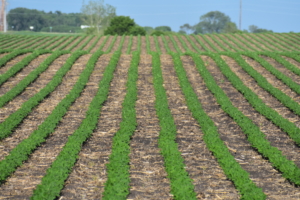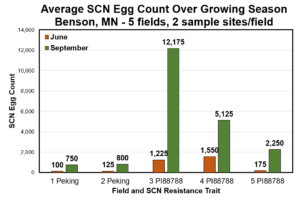Is PI 88788 Working in Your Soybean Fields?
Soybean Cyst Nematode (SCN) is the number one yield-reducing pest in soybeans. Potential yield loss to SCN is expected to rise as more and more populations of SCN overcome the PI 88788 source of resistance. The Peking source of SCN resistance is not near as common as the PI 88788 source but is used in several soybean varieties.
If you want to see how the SCN resistance source in your soybeans is holding up this growing season, you can do an early and late SCN soil test. If the egg count increases substantially between the early and late SCN sample, your SCN resistance source is likely failing.
Here are the 4 steps to this simple test:
Early SCN sample (June):
- Choose a spot in a current soybean field
- Collect 8 to 10 0-6″ soil cores taken within the soybean row at that spot
- Mark that spot with a flag or GPS so you can get back to that spot to sample later in the season
Late SCN sample (mid to late August):
4. Go back to the same spot you collected a soil sample from in June and repeat step #2
Once you’ve conducted this simple test, you will get an idea of whether or not the SCN resistance source in your soybean variety is holding up or if it is time to change the resistance source in next year’s varieties. AGVISE completed a field project using a similar procedure in 2019 and 2020. The data showed that the PI 88788 trait was not preventing SCN populations from increasing in some field sites tested in Minnesota. You can read more about our project here.
Data from the AGVISE SCN field project, 2019-2020
A silver bullet for managing SCN does not exist and will likely never exist. Do your due diligence and figure out if your SCN resistance source is working in your own fields.
You can order SCN submission forms from our online supply store here.
Additional resources:
SCN in Iowa: A Serious Problem that Warrants Renewed Attention
Iowa State University – SCN Resources


